Interorbital tug
Interorbital tug - listen to this phrase. From it blows some everyday future. It seems to be a tow - this is something utilitarian, simple, only between orbits. Space ship, which drags space liners ...
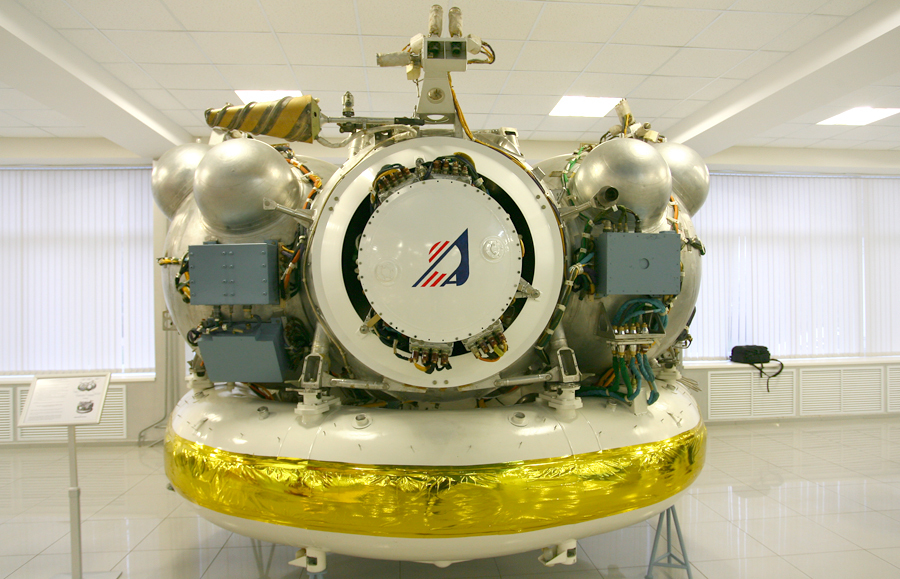
I do not know what considerations the developers had when they renamed the upper unit “Frigate” into an inter-orbit tug, but the wording was chosen exceptionally well. After all, what is a "upper stage"? So, just another part of the rocket, the upper stage in Western terminology - the “upper stage”. Whereas the “interorbital tug” is an independent spacecraft that performs complex tasks with high accuracy and in a short time. As you understand, today we talk about the inter-orbital tug "Frigate" produced by NPO. S.A. Lavochkin.
His name "Frigate" was for a reason, the first letter of the name preserved the memory of the predecessor from which the tug was developing. The Grandfather of the Frigate is the Phobos interplanetary station, which was the last attempt of the Soviet Union to conquer Mars, and the last interplanetary expedition of our country, in which we managed to achieve at least partial success.
')
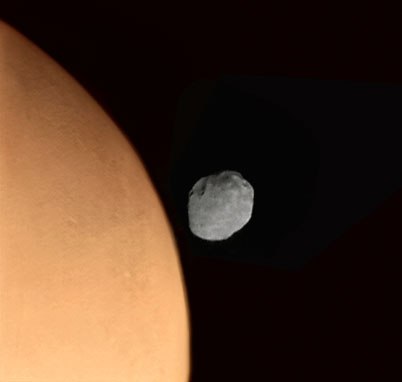
Like so much in astronautics, the Frigate is a talented compromise between needs, capabilities, timing, and product cost. For 14 years, he showed the foresight of designers and wide possibilities of modernization, which significantly expanded the range of applications.
The use of spherical fuel tanks led to NPO Lavochkin since lunar missions. If you look under the "Lunokhod" you can see the scope. "Phobos" flew in the layout, which is already visible tug of the future.

A similar fuel compartment was also tragically lost to the Mars-96.
"Frigate" was created in response to the growing needs of the market, for the launch of several satellites into different orbits. This turned out to be necessary both for GLONASS and for the numerous commercial orders of Roskosmos, and later on Arianspace.
When creating an interorbital tug, we took the path of maximizing the potential of industry and Euclidean geometry. Fuel tanks are enclosed in spheres, as in the form of the most effective in terms of the ratio of net volume and mass. The competing torus circuit lost in this comparison.
In the "Frigate" a lot of interesting engineering solutions, which delight with its practicality and elegant simplicity. As you can see, the tug is based on six spherical cylinders, two of which are for fuel, two for oxidizer and two contain control systems.
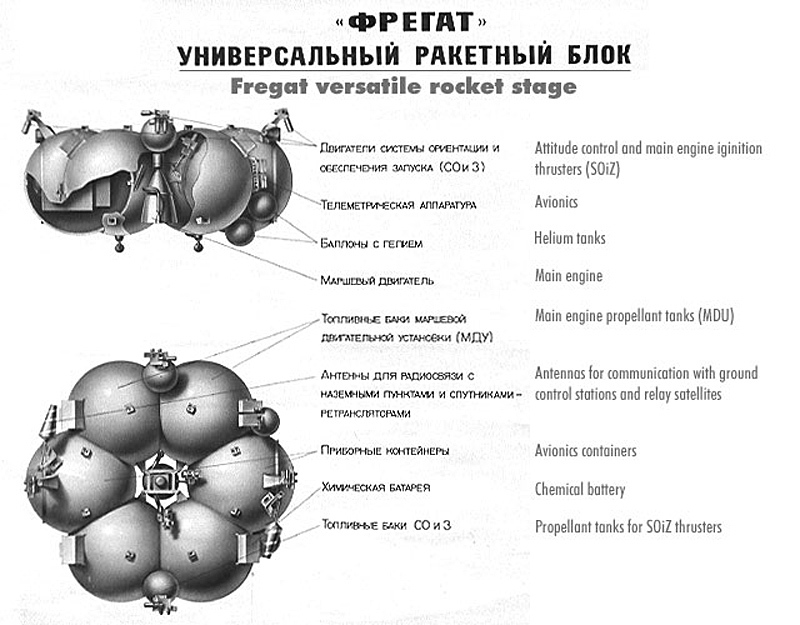
Oxidizer requires more than fuel, so tanks with nitric tetraxide are recessed in tanks with asymmetric dimethyl hydrazine.
The control system was borrowed from the “Zenith” rocket, produced by the FSUE “Research and Production Center for Automation and Instrument Engineering named after Academician N.A. Pilyugin. The system is implemented on the outdated, hermetic principle, i.e. Electronics is hidden inside the aluminum "aquarium." But such a conscious decision: the leaking circuit came out harder. There is only one practical difference between them: the hermetic block can fail due to depressurization, for example, due to the ingress of a micrometeorite or a fragment of space debris. Such a danger exists for long-lived stations, and for the Frigate, which lives only a few hours or days, this danger is minimal.
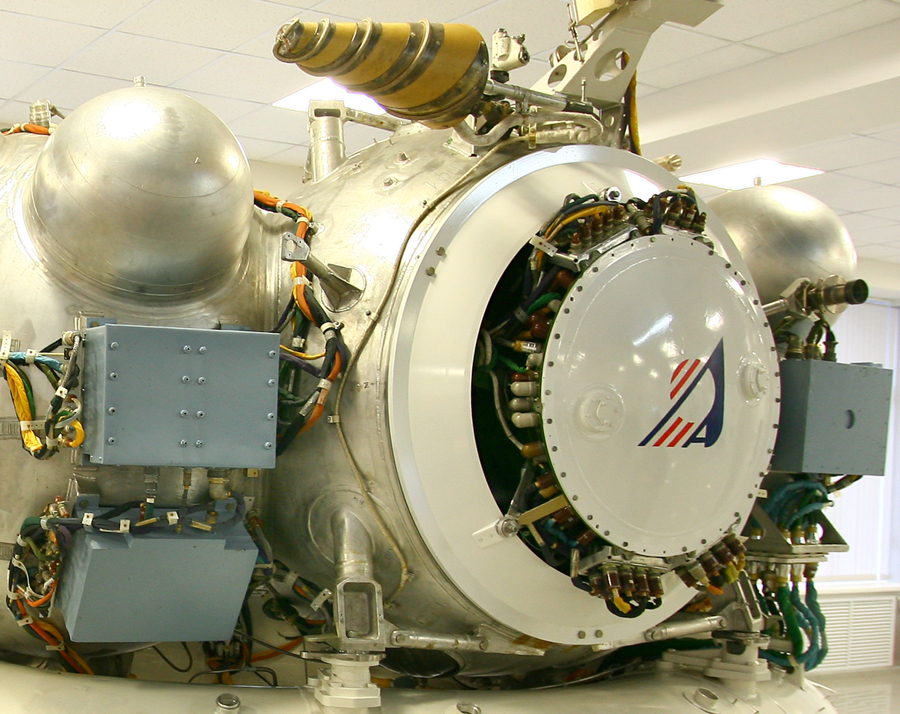
Marching engine chose brand C5.92 production "KB Chemical Engineering. A.M. Isaeva ", up to 2 tons. Although the choice of toxic components of the fuel is not popular among environmentalists, but from a practical point of view it is the optimal choice that provides the greatest efficiency for chemical engines. After refueling, the tug can wait for the launch for up to two months, which would be excluded if it were on “environmentally friendly” kerosene and oxygen.
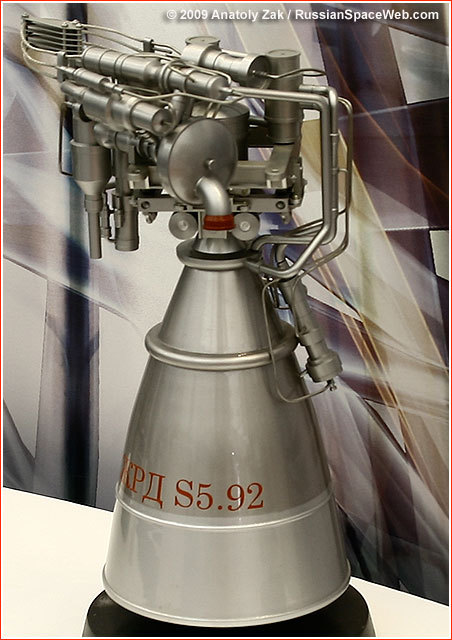
In addition to one marching, 12 more engines of orientation and roll control were installed on the Frigate. They are one-component hydrazine, i.e. they do not require an oxidizing agent, and the reaction of gas evolution occurs when the fuel and chemical catalyst contact.
Spherical tanks are effective in a mass / volume ratio, but the designers still had the task of transferring the load from the rocket to the satellites. Without an additional supporting structure, the interorbital tug during the launch would have been crushed between the rocket and the displayed load. The easiest way out is to enclose the fuel tanks in the power frame, but this significantly increases the weight and dimensions. The solution was found to be technologically more complex, but more effective - they “flashed” the tanks with supporting rods.
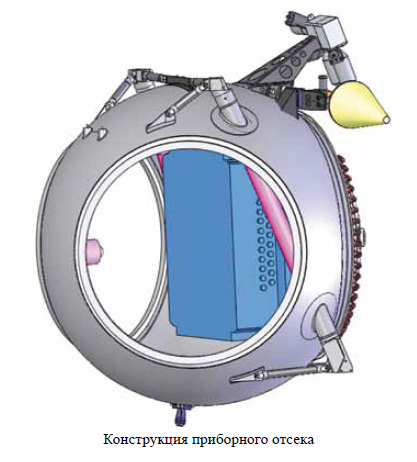
The Frigate was created in the 90s with the expectation of a future Soyuz-2 rocket with a digital control system. But when it became clear that the work on the tug was ahead of the creation of the rocket, the designers took care of the possibility of starting from the analog Soyuz.
For this NPO Lavochkin had to develop a fairing of its own design. As a result, it was in this layout that the interplanetary spacecraft launches of the European space agency Mars Express and Venus Express were launched in 2003 and 2006. So "Frigates" became the most distant ambassadors of modern Russia in space.
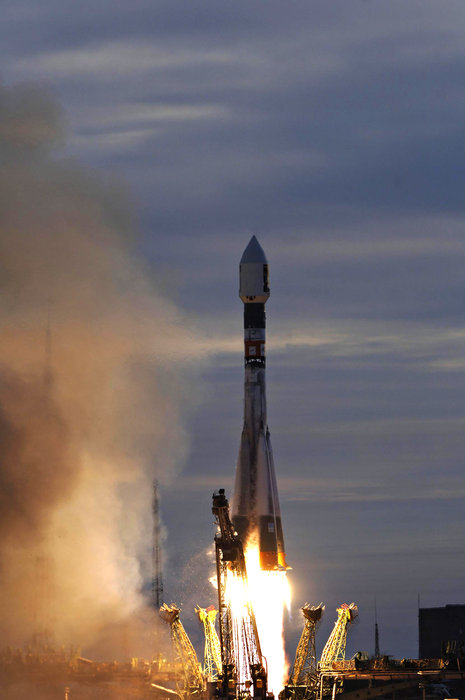
With the start of operation of the "Soyuz-2" it became apparent the need to expand the capabilities of the "Frigate" by increasing the volume of tanks. This was achieved by installing additional tanks of different sizes. So the fuel reserves turned out to increase from 5250 kg to 7100 kg, and change them depending on the task.

The history of the appearance of the Fregat-MT modification is curious. In 2003, Russia signed an agreement with the European Space Agency on the joint use of the Kourou cosmodrome in French Guiana. The ESA just lacked an average rocket, and the new modification of the Soyuz was very helpful. But the Europeans had one condition - the spent rocket stages should not reach Europe and sink in the Atlantic. Specialists NPO Lavochkin had to develop a separate layout with tanks for 6600 kg of fuel, so that the tug could take the baton earlier. Since then, "Fregat-MT" flew nine times from another continent.

But the top of the inter-orbital tug career was the launches into the geostationary orbit, on the Zenith rocket. The Frigate was not prepared for this, this orbit was too high: it was initially intended to operate only on the Soyuz, and we used to fly only Protons to the GSO. For the fulfillment of an impossible mission, the Frigate was added a three-ton dumped tank, and the mass of the filled fuel was brought up to 10.25 tons.

Fregat-SB (dumped tank) flew twice in the interests of domestic astronautics: put the Electro-L satellite into a geosynchronous orbit, and the Spectro-R astrophysical radio observatory into a highly elliptical orbit with an altitude of up to 340,000 km - almost to the Moon . Electro-L is known to many for its photographs of the Earth, but now the survey has been stopped due to a failure in the orientation system, and the satellite continues to operate as a repeater in the interests of Roshydromet. For the fourth year, Spektr-R continues its work under the Radioastron project - in fact, it is the most powerful radio telescope in the world. Both satellites are also developed in NPO Lavochkina. Now preparing to launch "Electro-L 2".
Since its first start in 2000, the Fregat has completed 45 successful launches. Several times there were failures, but he still pulled the payload on the fuel residues. In 2009, there was a case when the third stage of the rocket failed to complete the program, and the Frigate had to take the rap for itself and for that guy. The Meridian-2 satellite did not reach the desired orbit, but retained the possibility of partial operation.
Recently, on July 8, the Frigate launched 7 satellites at a time: one main Meteor-M2 and six small vehicles, including the Russian private DX1. During this flight, the Frigate even got on video from one of TechDemoSat-1 satellites.
With 26 seconds .
And on April 3, 2014, at the insistence of the French side, the Soyuz rocket with the Sentinel-1A satellite was equipped with video cameras to capture the entire launch process: from launch to separation of the spacecraft. There "Frigate" is not really visible, but still the video is worth viewing.
And only last Friday, on the forty-sixth flight, an error occurred during the work of the Frigate - a pair of European navigation satellites Galilleo did not make it to the target orbit. Now an investigation is underway, and it’s too early to talk about the reasons for the failure and the degree of damage, so far it’s impossible to say for sure that it is the Frigate that is to blame. However, the fact remains that there was a slip that occurred at the stage of the inter-orbital tug operation, and it is possible that it will lead to the loss of satellites.
Despite the failure of August 22, the Frigate remains one of the most reliable in Russia and the world. Its competitiveness is confirmed by the long-term operation of the foreign space giant Arianspace. The potential of the "Frigate" allows you to consider it as the basis for unmanned interplanetary stations, and as an auxiliary tool for manned mission to the moon .
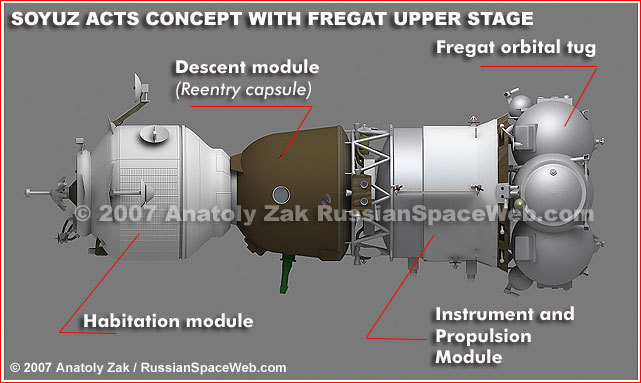
In preparing the materials used:
"Vestnik NPOL" (there are still a lot of things in ballistics, systems, heat, control, communications)
russianspaceweb.com

I do not know what considerations the developers had when they renamed the upper unit “Frigate” into an inter-orbit tug, but the wording was chosen exceptionally well. After all, what is a "upper stage"? So, just another part of the rocket, the upper stage in Western terminology - the “upper stage”. Whereas the “interorbital tug” is an independent spacecraft that performs complex tasks with high accuracy and in a short time. As you understand, today we talk about the inter-orbital tug "Frigate" produced by NPO. S.A. Lavochkin.
His name "Frigate" was for a reason, the first letter of the name preserved the memory of the predecessor from which the tug was developing. The Grandfather of the Frigate is the Phobos interplanetary station, which was the last attempt of the Soviet Union to conquer Mars, and the last interplanetary expedition of our country, in which we managed to achieve at least partial success.
')

Like so much in astronautics, the Frigate is a talented compromise between needs, capabilities, timing, and product cost. For 14 years, he showed the foresight of designers and wide possibilities of modernization, which significantly expanded the range of applications.
The use of spherical fuel tanks led to NPO Lavochkin since lunar missions. If you look under the "Lunokhod" you can see the scope. "Phobos" flew in the layout, which is already visible tug of the future.

A similar fuel compartment was also tragically lost to the Mars-96.
"Frigate" was created in response to the growing needs of the market, for the launch of several satellites into different orbits. This turned out to be necessary both for GLONASS and for the numerous commercial orders of Roskosmos, and later on Arianspace.
When creating an interorbital tug, we took the path of maximizing the potential of industry and Euclidean geometry. Fuel tanks are enclosed in spheres, as in the form of the most effective in terms of the ratio of net volume and mass. The competing torus circuit lost in this comparison.
In the "Frigate" a lot of interesting engineering solutions, which delight with its practicality and elegant simplicity. As you can see, the tug is based on six spherical cylinders, two of which are for fuel, two for oxidizer and two contain control systems.

Oxidizer requires more than fuel, so tanks with nitric tetraxide are recessed in tanks with asymmetric dimethyl hydrazine.
The control system was borrowed from the “Zenith” rocket, produced by the FSUE “Research and Production Center for Automation and Instrument Engineering named after Academician N.A. Pilyugin. The system is implemented on the outdated, hermetic principle, i.e. Electronics is hidden inside the aluminum "aquarium." But such a conscious decision: the leaking circuit came out harder. There is only one practical difference between them: the hermetic block can fail due to depressurization, for example, due to the ingress of a micrometeorite or a fragment of space debris. Such a danger exists for long-lived stations, and for the Frigate, which lives only a few hours or days, this danger is minimal.

Marching engine chose brand C5.92 production "KB Chemical Engineering. A.M. Isaeva ", up to 2 tons. Although the choice of toxic components of the fuel is not popular among environmentalists, but from a practical point of view it is the optimal choice that provides the greatest efficiency for chemical engines. After refueling, the tug can wait for the launch for up to two months, which would be excluded if it were on “environmentally friendly” kerosene and oxygen.

In addition to one marching, 12 more engines of orientation and roll control were installed on the Frigate. They are one-component hydrazine, i.e. they do not require an oxidizing agent, and the reaction of gas evolution occurs when the fuel and chemical catalyst contact.
Spherical tanks are effective in a mass / volume ratio, but the designers still had the task of transferring the load from the rocket to the satellites. Without an additional supporting structure, the interorbital tug during the launch would have been crushed between the rocket and the displayed load. The easiest way out is to enclose the fuel tanks in the power frame, but this significantly increases the weight and dimensions. The solution was found to be technologically more complex, but more effective - they “flashed” the tanks with supporting rods.

The Frigate was created in the 90s with the expectation of a future Soyuz-2 rocket with a digital control system. But when it became clear that the work on the tug was ahead of the creation of the rocket, the designers took care of the possibility of starting from the analog Soyuz.
For this NPO Lavochkin had to develop a fairing of its own design. As a result, it was in this layout that the interplanetary spacecraft launches of the European space agency Mars Express and Venus Express were launched in 2003 and 2006. So "Frigates" became the most distant ambassadors of modern Russia in space.

With the start of operation of the "Soyuz-2" it became apparent the need to expand the capabilities of the "Frigate" by increasing the volume of tanks. This was achieved by installing additional tanks of different sizes. So the fuel reserves turned out to increase from 5250 kg to 7100 kg, and change them depending on the task.

The history of the appearance of the Fregat-MT modification is curious. In 2003, Russia signed an agreement with the European Space Agency on the joint use of the Kourou cosmodrome in French Guiana. The ESA just lacked an average rocket, and the new modification of the Soyuz was very helpful. But the Europeans had one condition - the spent rocket stages should not reach Europe and sink in the Atlantic. Specialists NPO Lavochkin had to develop a separate layout with tanks for 6600 kg of fuel, so that the tug could take the baton earlier. Since then, "Fregat-MT" flew nine times from another continent.

But the top of the inter-orbital tug career was the launches into the geostationary orbit, on the Zenith rocket. The Frigate was not prepared for this, this orbit was too high: it was initially intended to operate only on the Soyuz, and we used to fly only Protons to the GSO. For the fulfillment of an impossible mission, the Frigate was added a three-ton dumped tank, and the mass of the filled fuel was brought up to 10.25 tons.

Fregat-SB (dumped tank) flew twice in the interests of domestic astronautics: put the Electro-L satellite into a geosynchronous orbit, and the Spectro-R astrophysical radio observatory into a highly elliptical orbit with an altitude of up to 340,000 km - almost to the Moon . Electro-L is known to many for its photographs of the Earth, but now the survey has been stopped due to a failure in the orientation system, and the satellite continues to operate as a repeater in the interests of Roshydromet. For the fourth year, Spektr-R continues its work under the Radioastron project - in fact, it is the most powerful radio telescope in the world. Both satellites are also developed in NPO Lavochkina. Now preparing to launch "Electro-L 2".
Since its first start in 2000, the Fregat has completed 45 successful launches. Several times there were failures, but he still pulled the payload on the fuel residues. In 2009, there was a case when the third stage of the rocket failed to complete the program, and the Frigate had to take the rap for itself and for that guy. The Meridian-2 satellite did not reach the desired orbit, but retained the possibility of partial operation.
Recently, on July 8, the Frigate launched 7 satellites at a time: one main Meteor-M2 and six small vehicles, including the Russian private DX1. During this flight, the Frigate even got on video from one of TechDemoSat-1 satellites.
With 26 seconds .
And on April 3, 2014, at the insistence of the French side, the Soyuz rocket with the Sentinel-1A satellite was equipped with video cameras to capture the entire launch process: from launch to separation of the spacecraft. There "Frigate" is not really visible, but still the video is worth viewing.
And only last Friday, on the forty-sixth flight, an error occurred during the work of the Frigate - a pair of European navigation satellites Galilleo did not make it to the target orbit. Now an investigation is underway, and it’s too early to talk about the reasons for the failure and the degree of damage, so far it’s impossible to say for sure that it is the Frigate that is to blame. However, the fact remains that there was a slip that occurred at the stage of the inter-orbital tug operation, and it is possible that it will lead to the loss of satellites.
Despite the failure of August 22, the Frigate remains one of the most reliable in Russia and the world. Its competitiveness is confirmed by the long-term operation of the foreign space giant Arianspace. The potential of the "Frigate" allows you to consider it as the basis for unmanned interplanetary stations, and as an auxiliary tool for manned mission to the moon .

In preparing the materials used:
"Vestnik NPOL" (there are still a lot of things in ballistics, systems, heat, control, communications)
russianspaceweb.com
Source: https://habr.com/ru/post/234431/
All Articles